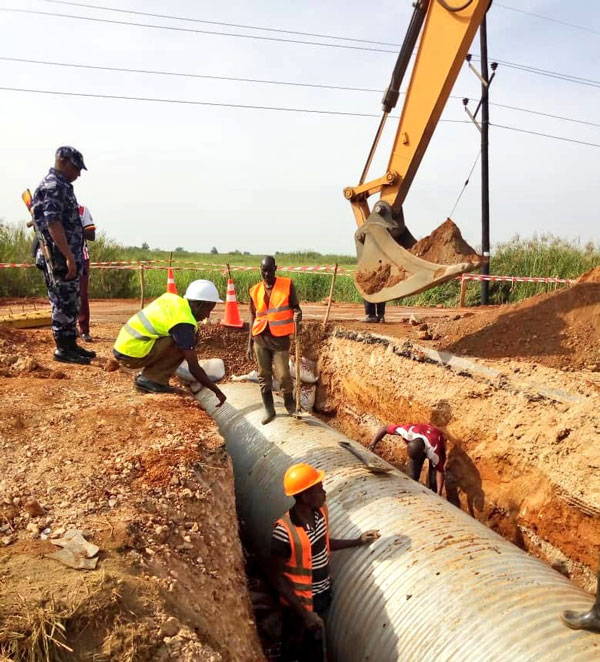
Ministries responsible must ensure that for any road to be worked on, it should be well designed by technical people
| ALEX TURIHOHABWE | Roads existence and sustenance depend on three major aspects; these are drainage; drainage and drainage; that may be called 3Ds. 1st D is the camber, 2nd D are the road side drains, and 3rd D are the drainage road structures.
Of the 3Ds, the 3rd D has been done unprofessionally on most of the district and community access roads. Below we illustrate how this comes about and how it has led to wastage of resources in terms of funds, materials and time.
Drainage road structures that are basically known by us in the road infrastructure include culvert lines, vented drifts, bridges, and box culverts.
The major use of these structures is to carry water from one side of the road to the other and this is known to everyone. Because of this there is a lot assumption that the laying, location and construction can be done by everyone without an input of experienced Engineers.
The above structures have different sizes and these depend on what volumes of flow they are to carry. This concept is known to both the technical and non- technical people. But the technical are able to calculate and determine the volume of the flow while the non -technical do not.
It is assumed that using the experienced professional technical staff is very expensive on the surface of it and this has led to some organisations using non -technical or inexperienced technical staff in laying and construction of these drainage structures.
Move along the roads; especially the district and community access roads, and what you find and observe is quite threatening in terms of wastage of resources. To mention a few cases that can give a highlight of what is happening in this road industry; it is known to us that the district roads in the entire country are towards 35,000Km while community access roads are far above 70,000 Km.
Travelling along district and community roads in West Nile and some other districts in Northern Uganda; where hosting of refugees is common and hence there are operations of NGOs, this is what we saw: a road of approximately 27Km had about 100 culverts lines of different sizes. Most of them had poorly built head and wing walls. Over 80% of these were non-functional; this meant that they were either blocked/silted or had no outlet. Others had broken because of less culvert cover material.
Now, let’s analyse the cost of a culvert line; say of a 600mm diameter consisting of an average of six culvert rings. One culvert ring costs Shs150, 000 and six culvert rings cost Shs900, 000, and 100 culvert lines cost Shs.90 million. If 80% of them are unfunctional; that is wastage of Shs.72 million. The above cost only considers the purchase prices; excluding the cost of transportation, excavation, and installation.
Further is analysis at the national level for the length of mentioned district roads. We assume the culverts lines are not installed and are therefore lacking or they have been installed at three culvert lines for every kilometer of road. A total of approximately 100,000 culvert lines are installed but non-functional. This translates to Shs7.2 trillion.
If the drainage system is not functional, it means that you have no road. This is because the moment it rains, the road is washed away.
To avoid these loses the ministry responsible for policies and those implementing projects must ensure that for any road to be worked on, it should be well designed. For a developing country like Uganda every shilling counts; whether it is from a donor or not.
****
Eng. Alex Turihohabwe is The Past chairman Uganda Association of Consulting Engineers and Continental finalist 2017 CEO Global in the Business and Professional Sector.
 The Independent Uganda: You get the Truth we Pay the Price
The Independent Uganda: You get the Truth we Pay the Price


